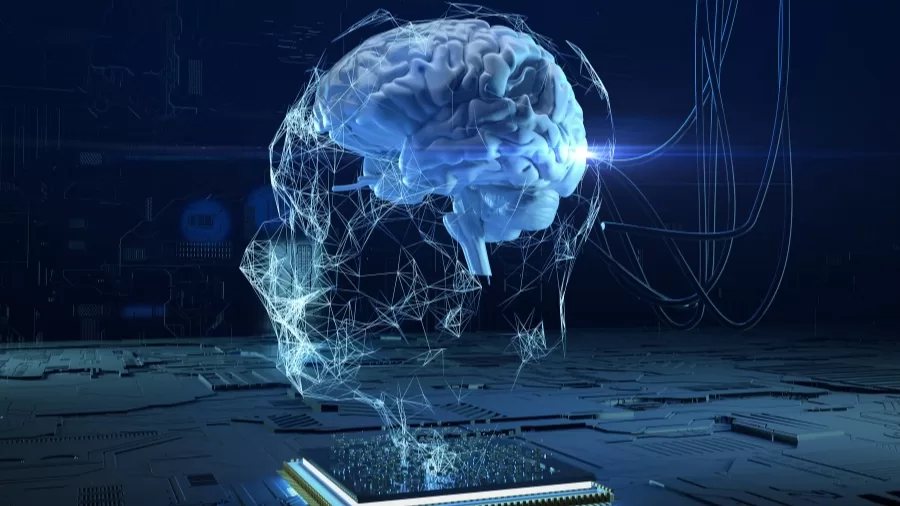Technology
Artificial General Intelligence (AGI): The Next Frontier in AI and Its Potential Impact on the Future

- Several other large transformative activities across an entirely different field series can be executed through AGI.
- While the technology companies are actively working toward AGI, OpenAI and Google are two of the larger organisations that are also important to mention. However, the realisation of any of those plans will, of course, remain purely theoretical and continue to meet possibly unsurpassable difficulties.
- Each individual may discern a vast opportunity to promote business processes through AGI. Yet, certain fears include the massive disruption of economic activities, potential negative ramifications of job loss, and possibly social changes.
Artificial General Intelligence (AGI) is often construed as the highest level of AI by which computers can exercise an understanding of the world, learn about it, and use that knowledge for various tasks—possibly even surpassing human intelligence. While the potential of AGI provides great excitement to people within their industries, we are far away from such a major accomplishment. Currently, it is a narrow AI system that goes wonderfully in a particular domain but utterly fails when it comes out of this domain. This is in stark contrast to humans, whose adaptability lets them switch quickly from conversation to cooking to grappling with difficult problems.
Surprise! AI usually does well at doing one thing. Thus, while Google DeepMind’s AlphaGo is capable of beating the best Go player in the world, a more mundane question from it will leave it making a lot of mistakes. Narrow AI is different from AGI because it should be able to process a relatively wide variety of tasks.
What Is AGI, and Why Does It Matter?
AGI is the next stage in AI development; narrowing AI, which was designed to perform tasks very well but just one at a time, to the wider aspect will have the cognitive flexibility and problem-solving capacities known in their human namesakes. This means that AGI could utilise what it learnt in one context, say cooking, to conceive some ideas in some other domains, say in project management. The potential impact on companies is just immense. By aggregating information from multiple industries, AGI may enhance customer service, speed up business, and offer strategic insight, from what we have felt so far.
The point that AWS makes is that “AGI is a theoretical pursuit that aims to lead to AI systems becoming self-directed, self-aware, and able to acquire new skills.” Strong AI, as it is also called, remains the desired goal at the core of adventures at many of tech’s top establishments, such as OpenAI, Google, Meta, and Anthropic. Some have made impressive progress in the quest to crack the AGI code.
The OpenAI Breakthrough: Is “AGI” within the Reach?
Recently, OpenAI drew people’s attention with the speculation that AGI might be much closer to being constructed. The CEO of OpenAI, Sam Altman, even boldly claimed that OpenAI now knows how to construct AGI in the classical sense. His claim came on the heels of the successful passage of the ARC-AGI test by the latest AI model build called “o3.” For those who argue that AGI should be qualified by its ability to adapt homeostatically to the unpredictable environment, this comes as a big surprise. However, the truth lies in the fact that despite the progress represented by the O3 model, human-level AGI is a long way away. Even though O3 can carry out activities for which it was not specifically trained, it is incapable of carrying out elementary tasks, placing it at least some limit in terms of cognitive comparison.
Yann LeCun, Meta’s Chief AI Scientist and one of the so-called “AI godfathers,” has expressed similar doubts, explaining that today’s AI system can function about as well as a cat or a dog. While Meta might have intentions of building AGI, such statements point out that we are not there yet.
Business Ramifications of AGI
The advancement of AGI would certainly bring on business changes that are hard to imagine. Possible trends in which an AGI system works its magic might include analysing market trends, restructuring supply chains, and delivering customer service, all while also informing big strategy. It will evolve with time based on real-time changes with new knowledge, which might lead to efficiency management control throughout organizations.
AGI’s biggest roadblock is undoubtedly cost. Ordinary AI models can be trained for less than a penny per unit, while AGI is expected to cost much more—from 17 to 20 dollars per task. However, predictions hold that the cost of AGI technology will lessen as time passes, such that human work prices are likely to be competitive in the future.
Levels of AGI.
To understand AGI better, we should take a closer look at the different levels of their progress. Google DeepMind has suggested a paradigm with six AGI stages from Level 0 (not AI) to Level 5 (superhuman). OpenAI’s model has five stages instead. These are as follows:
- First Stage: Chatbots—AI Capable of Holding a Conversation at a Basic Level.
- Second Stage: Reasoners—AI Systems That Can Succeed in Human-Level Scenarios.
- Third Stage: Agents—AI that Performs Tasks You Assign It to Do.
- Fourth Stage: Innovators—AI Systems on Which Invention and Innovation Depend.
- Fifth Stage: Organisations—An AI That Permits an Organisation to Perform Fully.
Real AGI development needs actual progress in technologies such as machine learning years beyond the point of recognising patterns towards actual understanding. AI also needs to be designed to understand the establishment of causality of an event, not just its mere cause but the reason behind it, and think based on common sense. Technically speaking, self-consciousness is still under debate over what this AGI would mean.
Capabilities that lie at the heart of AGIs
There are a few areas under AI that need to be largely pushed further for AGI to be viewed as efficient:
- Most interestingly, perception from optics is one such problem area. Equipment that will perceive objects to a degree similar to that of humans should be designed under AI.
- Similar to its proficiency in outer appearances, the system must recognise the presence of the person in these appearances.
- Of the various other capabilities concerning speech, AI also recognises sarcasm, emotions, and accents.
- To this end, fine motor skills have to be incorporated into a robot AI to become as adaptive and gentle as possible.
- Problem-solving will demand high thinking and reasoning capacity in AI so that even truly complex problems can be resolved within AI knowledge.
- For AI, looking at the surrounding environment is sort of largely challenging even for autonomous cars.
- But being able to pass on the knowledge, in practice, without simply copying the ways that have been taught, is a big problem that is still unsolvable for AI.
- Of the various abilities and skills the AI must possess, the most difficult is understanding emotions, facial expressions, gestures, smiles, and how information is passed on from one person to another.
These are critical developments in the journey of AGI to realise its full potential and disrupt industry setups, providing new opportunities for enterprises to thrive.
The Social and Ethical Challenges of AGI
This challenge identifies how AGI introduces a panacea for social ethics. AGI may bear implications that are spread well beyond its per se meaning as part of the good rather than for business or society at large as AGI disrupts and alters employment patterns, the creation of wage worlds, and business architecture. AGI could facilitate automation so that entire sectors are converted in the way of overnight change.
Problems do arise, however, as to the genuine race forward to AGI. The AI pioneers themselves can be very alarming when it comes to this; for example, Nobel Prize-winning and former Google engineer Geoffrey Hinton has often expressed concern that AGI may be one of the utmost dangers to all humankind. These technologies must entail the signing of an open letter by AI professionals in 2023. Yoshua Bengio and Elon Musk, among their signatures, requested that the ultimate cessation of AGI development be for the necessary safety precautions. Otherwise, some philosophers, such as LeCun, lean toward the view that AGI would bring with it a new renaissance for society and business and inspire new potentials, as it would pose and answer global challenges.
The Future of AGI: A Technology We Can’t Ignore
The quest for true AI is far from being realised; however, AGI will likely be a subject of debate in considering where the technology will take business and society. There are a host of technical, economic, and ethical challenges that AGI never realises. However, with organisations bent on achieving a definite advantage against their competitors, monitoring the development of AGI will prove very necessary. It is this race to AGI that will ultimately define the future of technology and the next era of human civilisation—it will control the race to AGI that will define the future of the technology to come and manage the next era of human progress.





















































